Q&A – Ask Neil: March 16, 2023
(Please read these instructions carefully.)
Before you post your question, please look at recent issues to see if someone else has already asked it. You might find your answer there.
How to submit your question…
• Click the link provided below to post your question. After you submit your question, a new window will pop up giving you the address to which you can e-mail a photo to accompany your question. Clear, medium-resolution photos. (Try to avoid low-res thumbnail photos, please, in case I have to zoom in to see things.)
• Click here to post your question.
• Please only post your question one time.
• One question per reader, please.
• Please use this only for posting questions – not for standard emails.
• Watch for your answer in the following week’s e-gardens.
• I choose those of greatest general interest. For example, plant IDs seldom make the cut.
• I must have your first name or initials.
• I must have your city or county. (Texas is a very large state.)
Before I begin with your questions and my answers, let me thank those of you who have sent high-resolution photographs. Several of the photos below are low-res. It often makes it difficult for me to answer your questions. Please adjust that setting on your phone or camera if at all possible. Thanks!
QUESTION 1
HOW CAN I GET RID OF OBEDIENT PLANT?
Question: How can I get rid of obedient plant? Not knowing how invasive it is, I planted it in one of my beds. It is taking over. Virginia H., Burnet.
Answer: If you have a clear shot at it as it grows actively this spring you could apply a broadleafed weedkiller spray (containing 2,4-D), but you must not have desirable non-grassy plants within 10-12 ft. from your spray because of drift. Otherwise, you could cut it to the ground, cover the bed with black polyethylene plastic and bark mulch and leave it alone for this growing season. That should kill it. Your only other option would be to rototill and dig and rake the roots out by hand.
QUESTION 2
WHY HAS MY SHUMARD RED OAK NOT LOST ITS LEAVES? ANOTHER ONE HAS.
Question: I have two Shumard red oaks. One has lost its leaves from last fall. One has not. Why? Pam M., Waxahachie.
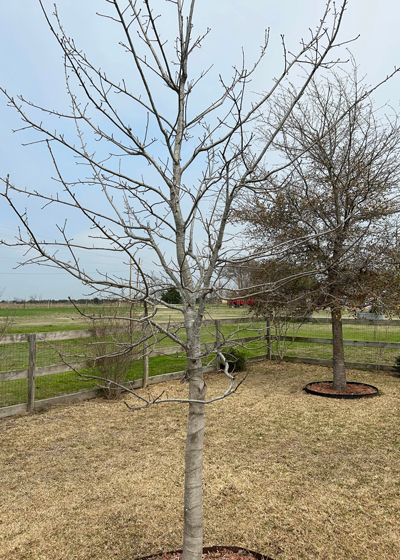
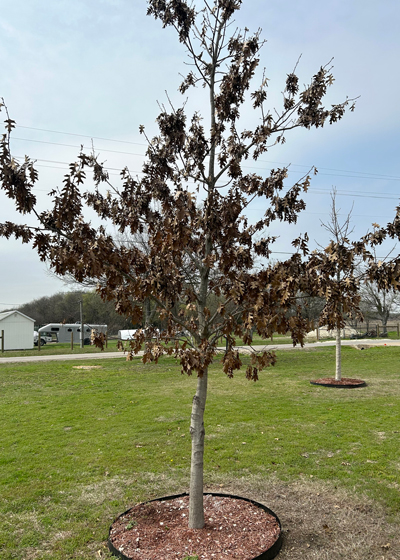
Answer: That’s the genetic variation you hear me describing when I talk about oaks. This is common with red oaks. There isn’t anything you can do about it. Some years it will be more pronounced than others. It doesn’t indicate any kind of problem at all.
QUESTION 3
CAN PRE-EMERGENT WEEDKILLERS BE USED IN FLOWERBEDS?
Question: Can pre-emergent weedkillers be used in flowerbeds, and do you recommend it? Chance C., Longview.
Answer: Many pre-emergents give instructions for use within shrub and flowerbeds. Read and follow label directions. That said, the worst weeds in flowerbeds (bermudagrass, Johnsongrass and nutsedge) are perennial weeds and pre-emergents won’t do much to reduce their long-term populations.
QUESTION 4
OUR LIVE OAK HAS SPLITS IN ITS TRUNK. WHAT CAN BE DONE TO SAVE THE TREE?
Question: We have a live oak with splits in its trunk. Is there something I can do to save it? Angela W., Grapevine.
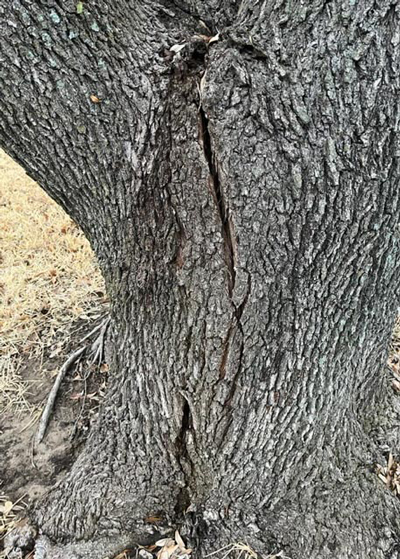
Answer: This is a form of “radial shake,” that is, cracking brought on by the extreme cold of February 2021. Many Texas oaks look just the same. I would suggest you hire a certified arborist to keep an eye on the tree. The top growth will be your best indicator of its long-term vigor. It’s too soon to tell, but as soon as it leafs out you’ll have a good idea. If it has a full canopy, it should be fine. If it gets thinner and thinner with each passing spring, then you need to be concerned.
QUESTION 5
IS THIS DAMAGE FROM HAIL, AND IS IT A LONG-TERM CONCERN FOR MY TREE?
Question: We had a giant hail storm and I think that’s what damaged the bark on my Chinese pistachio tree. Should I be worried? Becky G., Sherman.

Answer: If these showed up right after the hail your tree will probably be fine. They’re the equivalent of bruises to the human body. Again, all you can do now is watch to see how the tree responds this spring. Watch for any signs of decay later this year and into 2024. Be aware, too, of any damage to the tops of branches where it might be more severe, also harder to see.
QUESTION 6
DOES ANNUAL BLUEGRASS BUILD UP RESISTANCE TO PRE-EMERGENTS?
Question: For several years I’ve been applying the pre-emergent weedkillers you mention in spring and fall. This year I’ve had my worst year ever with annual bluegrass (Poa annua). Is it possible that the weed builds up resistance to the herbicides? Mark M., Bexar Co.
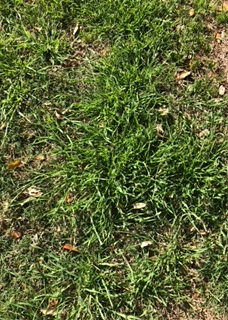
Answer: Yes. While the pre-emergents do help, they may not give the 100 percent prevention with that specific weed that we would hope. The problem has definitely been identified by several southern ag universities. I did a good bit of reading up on it last August, and at that time there was no product in the consumer marketplace that got around the problem. Commercial applicators have access to products that will offer better prevention. Research is ongoing to find the best workaround. (With apologies, it’s 2 p.m. Thursday, with distribution of e-gardens in just 4 hours. I’m needing to help my wife with a “Meet the Candidates” event this evening (running for re-election to McKinney ISD school board), so I don’t have time to do the same level of research to find those websites, but if you’ll Google “university resistance of Poa annua to pre-emergent herbicides” I think you’ll find several matches, likely Clemson, University of Georgia, Auburn, LSU, Oklahoma State and TAMU.
QUESTION 7
WHAT IS HAPPENING TO THIS REDBUD?
Question: What is happening to this redbud? The flowers are all clustered along the trunk and the tree appears half dead. (Photo is from land I own near Sulphur Springs) Joseph R., Murphy.
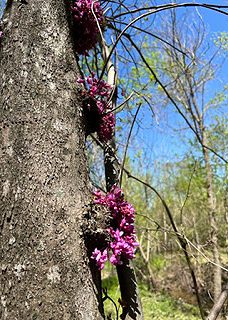
Answer: As redbud trees age their trunks begin to form burls. They’re knot-like swellings along the trunk. They consist of shortened limb tissues that develop within a contorted mass. When they bloom it makes a tight “bouquet” as in your photo. It’s certainly not normal, but it is very common. Enjoy it while you can. Probably the next step in this tree’s evolution will be sprouts coming up from the base and a cluster of several new trunks.
QUESTION 8
WHAT IS EATING MY SPINACH?
Question: What is eating my spinach? All I see are black insects that are crawling around on the soil. They look somewhat like rollie polies. Marsha D., Arlington.
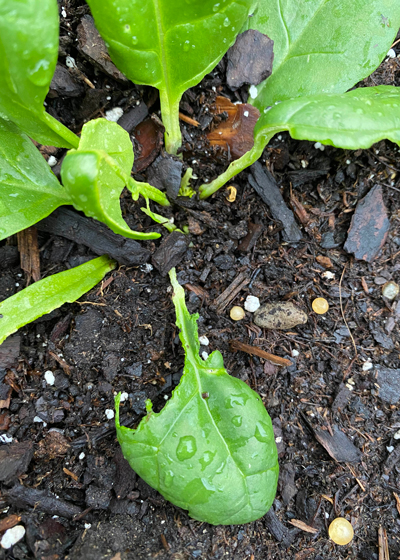
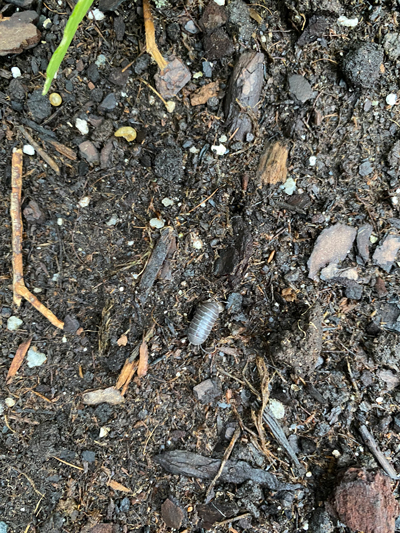
Answer: You are correct on the ID of your pests, also known as pill bugs or sow bugs. They are notorious for devouring tender new foliage, and young spinach seedlings would be high on their list. Their control would be the same as what you would do for snails and slugs. Sevin dust sprinkled on the ground will stop them as they crawl across it. Or there are snail and slug baits that will get all three types of pests. Or you could sink a pie pan filled with beer into the ground. They will be attracted to the fermenting fluid and they would tumble in and drown.
